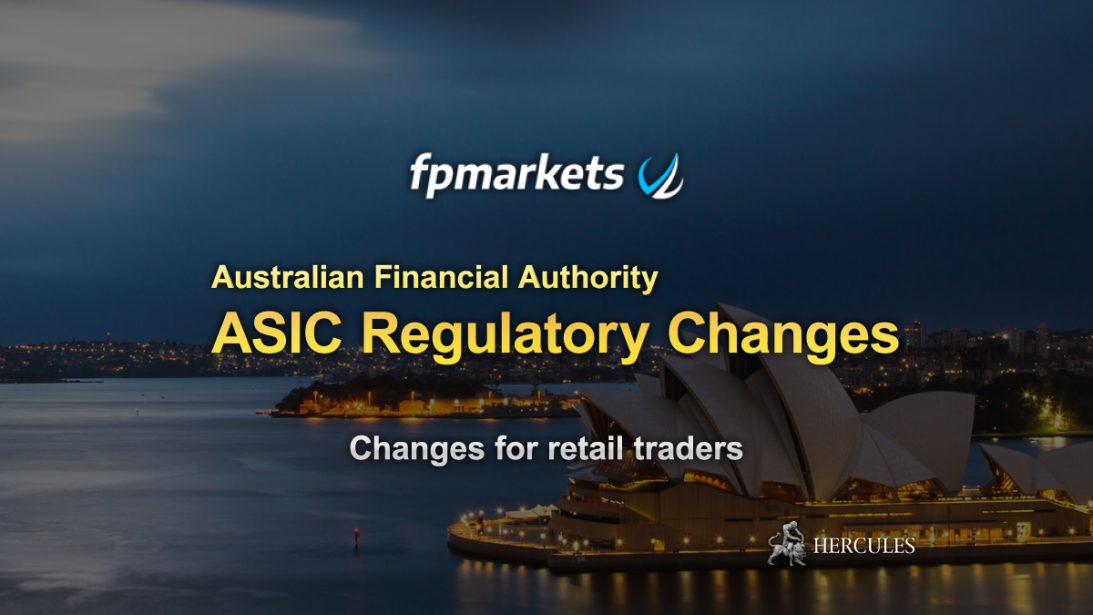Categories
ASIC's New Regulatory Changes may affect how you trade Forex and CFDs online
ASIC in Australia has made some regulatory changes which may affect your way of trade significantly.


List of ASIC Regulated Brokers
ASIC Regulatory Changes
In August 2019, the Australian Securities Commission (ASIC) released a consultation paper which may significantly affect the way traders invest.
The key changes which may have the most significant impact on your trading are as follows:
- Leverage will be restricted from 2:1 to 20:1 depending on the instrument that you are trading.*
- Proposed regulations will make it mandatory for clients to be liquidated if a client’s margin falls to 50% or less of the initial required margin.
FP Markets will continue to engage with ASIC over the coming months as it believes in a consistent approach to regulation and raising standards in the industry.
ASIC Consultation Paper 322 – Industry Changes
Please find below a brief summary of the proposed changes which ASIC are proposing will be introduced for retail clients:
1. Maximum leverage rates
The following leverage restrictions (i.e. increased margin requirements) have been proposed for retail traders:
- 20:1 leverage on currency pairs and gold = 5% margin (currently 1:500)
- 15:1 leverage on major indices = 6.67% margin (currently 1:100)
- 10:1 leverage on commodities (excluding gold) = 10% margin (currently 1:100)
- 2:1 leverage on cryptocurrency-assets = 50% margin (currently 1:2)
- 5:1 leverage on shares or other underlying assets = 20% margin (currently available from 5%)
Set out below are illustrative examples of changes to the capital outlay required to open positions under the various asset classes based on FP Markets’ current maximum leverage allowance:
2. Margin close-out
ASIC has proposed a margin close-out rule at 50% of the initial required margin.
This means that if the funds held in a retail client’s CFD trading account fall to less than 50% of the total initial margin required for all their open CFD positions on that account, CFD positions must be closed.
3. Negative balance protection
ASIC has proposed “negative balance protection” to ensure that retail traders are unable to lose more than the money available on their account.
If a retail client’s balance does go negative, the broker will be obliged to bring the balance back up to zero at its own cost.
4. Real-time disclosure of overnight funding costs
Overnight funding costs will need to be disclosed in the trading platform rather than simply on the client statement as applies currently.
5. Prohibition on inducements
Incentives will not be permitted to be used to attract retail clients or prospective retail clients to open or fund a CFD trading account or to trade CFDs, by offering a gift, rebate, trading credit or reward.
For the avoidance of doubt, ASIC does not consider informational services, educational tools or research tools as incentives.
6. Risk warnings
Risk warnings will feature more prominently to all retail clients and prospective retail clients on any form of documentation, PDSs, trading platforms advertising and websites.
These risk warnings will include:
- The complexity of the Products and likelihood of losses
- The Percentage of clients that have lost money in a 12-month period
7. Transparent pricing and execution
Brokers will be required to maintain and make available on their website, a CFD pricing methodology and a CFD execution policy.
The CFD pricing methodology must explain how FP Markets determine the prices, and the CFD execution policy must explain how they address clients’ intention to trade and the effects thereof.









